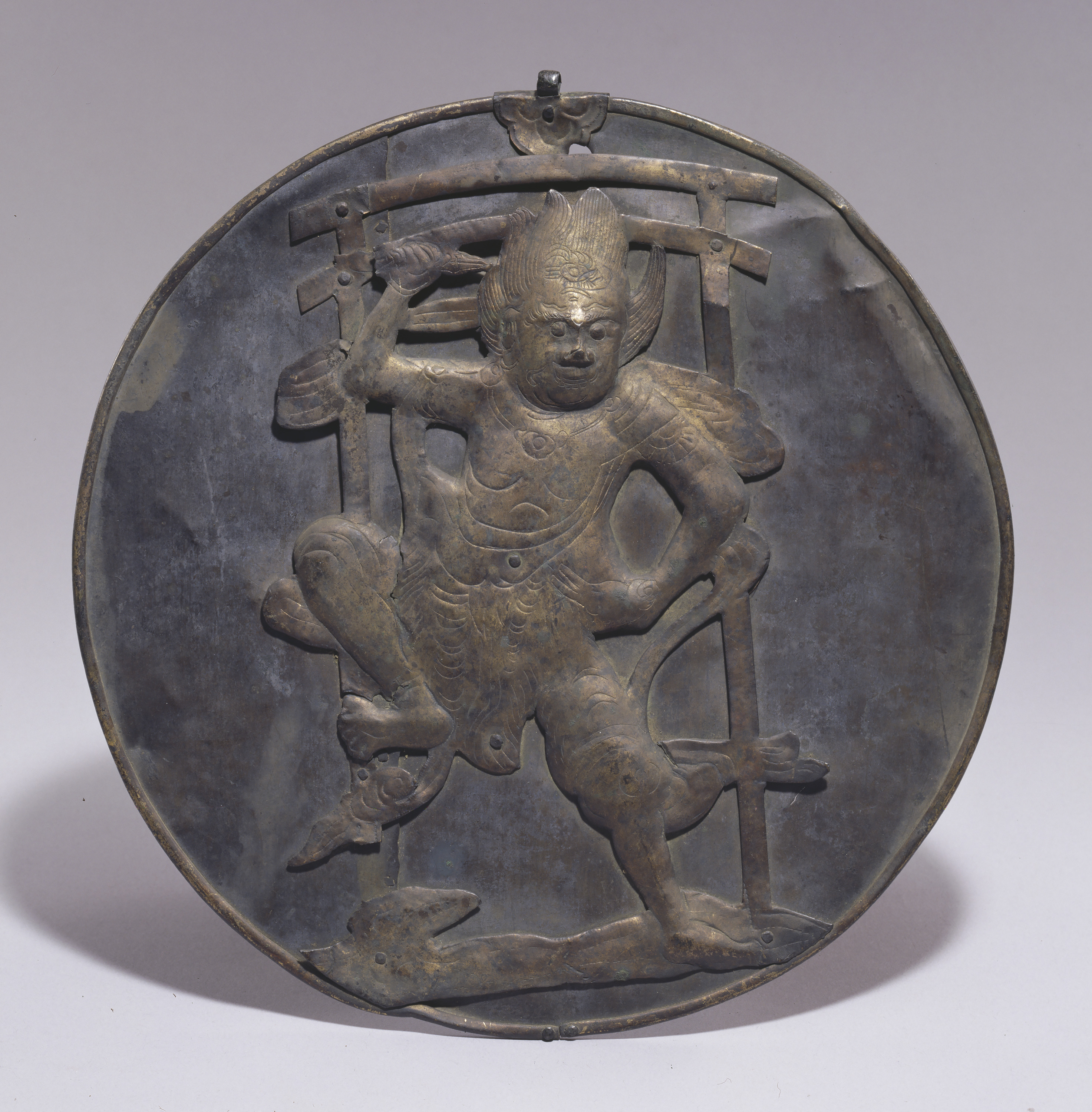- TOP
- Hanging Buddhist Relief of Zao Gongen
Overview
Hanging Buddhist Relief of Zao Gongen
- Museum No.
- JK291
Showing 1-6 of 1
| Title | Hanging Buddhist Relief of Zao Gongen |
|---|---|
| Designation | |
| Artist | |
| Category | Archaeology(J), Hanging Buddhist Reliefs |
| Country | Japan |
| Period | Heian |
| Century | |
| Year | |
| Quantity | |
| Materials | |
| Dimensions | Diameter 24.5cm |
| Inscription by | |
| Signature/Seals Etc | |
| Donor |
This object may be one within a set or the title of a set. To see all objects in the set, perform a Category Search by the Museum Number below, entering numerals only before the hyphen.







Kakebotoke, once referred to as kakekagami or mishôdai, are round plates with an image of a Buddhist or Shintô deity, hung in temples and shrines for worship. Round plates can be metal or wooden, and most are 30 cm in diameter. Developed under the influence of Buddhist and Shintô syncretism, kakebotoke were popularly made from the Heian (794-1185) through the Muromachi (1392-1573) periods. The carving technique shifted from line engraving to relief engraving in the 11th century, and by the 13th century, kakebotoke began to bear rounded relief figures.
Japan-Heian